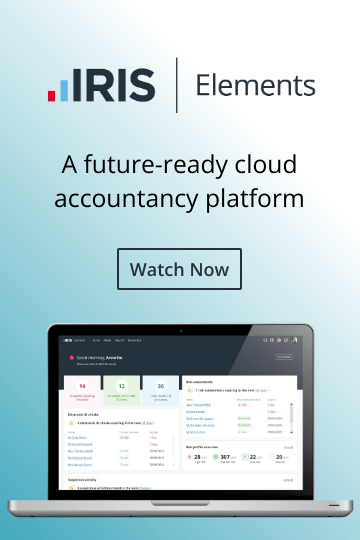BLOGS
IFRS 16 Leases: what the standard means for businesses

IFRS 16 Leases decides how businesses across the world account for leased assets and their liabilities.
It has played an important role since being issued in January 2016 and then first fully implemented for reporting periods three years later. Many companies have leased assets on the books: depending on the sector, these can be anything from offices and cars to planes and construction equipment.
And, because IFRS 16 plays a key role in how businesses report leased assets, it also sets out the latest rules for lessors as well.
IFRS and its work
Before discussing IFRS 16, it’s worth knowing about the body responsible for its creation and worldwide promotion. The International Financial Reporting Standards Foundation is a not-for-profit organisation headquartered in the UK. Its International Accounting Standards Board creates a globally accepted set of accounting and disclosure standards. These International Financial Reporting Standards (IFRS) aim to be a common “language” for the world’s accountants and bookkeepers.
The extent to which IFRS rules are embraced varies – but there is no doubt they have proven popular. So far, 159 different global jurisdictions have committed to IFRS. The United States has its own accounting standards (called the US Generally Accepted Accounting Principles (US GAAP)), but it pledged in 2002 to remove differences between IFRS and US GAAP in what became known as the Norwalk Agreement.
The leasing project itself was a joint project between the International Accounting Standards Board (IASB) and the Financial Accounting Standards Board (FASB). The resulting project led to the creation of IFRS 16 and its US equivalent - FASB ASC 842. Though the two boards worked closely to achieve full convergence, some divergence over the course of the project did occur and resulted in some significant differences between the two standards.
How IFRS 16 works in practice
IFRS 16 establishes a single lessee accounting model; anyone using a financial statement set out in this way can observe the amount, timing, and cash flow uncertainties arising from leased right-of-use assets.
IFRS 16 enables this by setting out an accounting model for most assets and liabilities contracted for longer than 12 months. Anything tangible and worth less than about $5,000 when new is generally considered exempt, and certain asset categories are also not included, which we will discuss later.
Although the rules surrounding lease reporting have remained largely unchanged since IFRS 16 came into action in January 2019, more guidance has been added in relation to both COVID-19 and interbank offered rate (IBOR) reform.
The impacts of IFRS 16 on the business balance sheet
IFRS 16 brought an end to “off-balance-sheet” accounting for leaseholders. In the past, similar lease transactions could either appear in full on a balance sheet or find themselves mostly absent, depending on a series of tests.
Although this new standard keeps everything in one place and in a common accounting language, it does, however, affect performance measurements like EBITDA and the gearing ratio. Many assets not being reported before IFRS 16 would go on to have a recurring impact on such calculations when the standard was put in place.
All of this also means businesses have to have a good in-house system to track leases, as well as an aptitude for sifting contracts to assess what agreements within them constitute a lease.
What IFRS 16 doesn’t affect
The difference between a lease and a service is important because, at first glance, the two can appear similar. However, contracts for services are not affected by IFRS 16.
Put simply, a lease under the rules is usually tangible and gives you control over something for a set period of time. In return for that control and time, your business pays a lessor money.
It’s worth bearing in mind some contracts have aspects which constitute a lease and then other parts which do not. When applying IFRS 16 rules, you can unpick the parts which are leases and relate them to standalone prices, or the whole contract might be added to a report instead.
What types of leases are exempt from IFRS 16?
There are some types of leases which do not have to be reported in line with the IFRS 16 standard.
For example, leases to explore for or use minerals, oil, natural gas, and similar non-regenerative resources are exempt – as are agreements to lease biological assets.
Furthermore, service concession arrangements and IP held under licencing agreements also fall outside of IFRS 16.
Want to learn more about practical expedients under IFRS 16?
Read our blog hereIFRS 16 Leases and reporting
Under IFRS 16, a business must record how much lease liability there is at the start of an agreement (so how much money in total is to be paid), any payments made before or as the lease starts, any direct costs to the lessee and put estimates (if applicable) of how much it would cost should an asset be dismantled, removed and the site where it stood restored. The IFRS 16 standard also asks businesses to take into consideration depreciation, accumulated impairment, interest, and any index or rates that might apply to variable payments.
What about the lessors?
IFRS 16 became the updated reporting standard for lessor accounting practices, even though, in many ways, not much has changed for them. IFRS 16 replaces IAS 17 but keeps what the latter set out in terms of lessor accounting requirements and how these businesses should classify their transactions as operating or finance leases.
What IFRS 16 does include are changes to the classification guidance for subleases and updated disclosure requirements that better highlight a lessor’s risk exposure.
IRIS can help with the complexities of leases
IRIS Innervision is a leading provider of IFRS 16 and FASB ASC 842 lease accounting software and lease portfolio management services to global corporate lessees. We help organisations around the world automate lease accounting compliance, transform leasing processes, and improve efficiencies across the lease lifecycle.
IRIS Innervision can help companies like yours
Find out more











